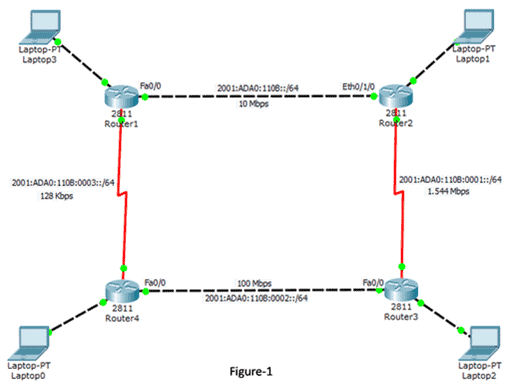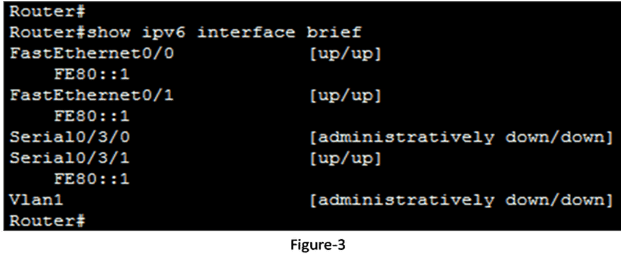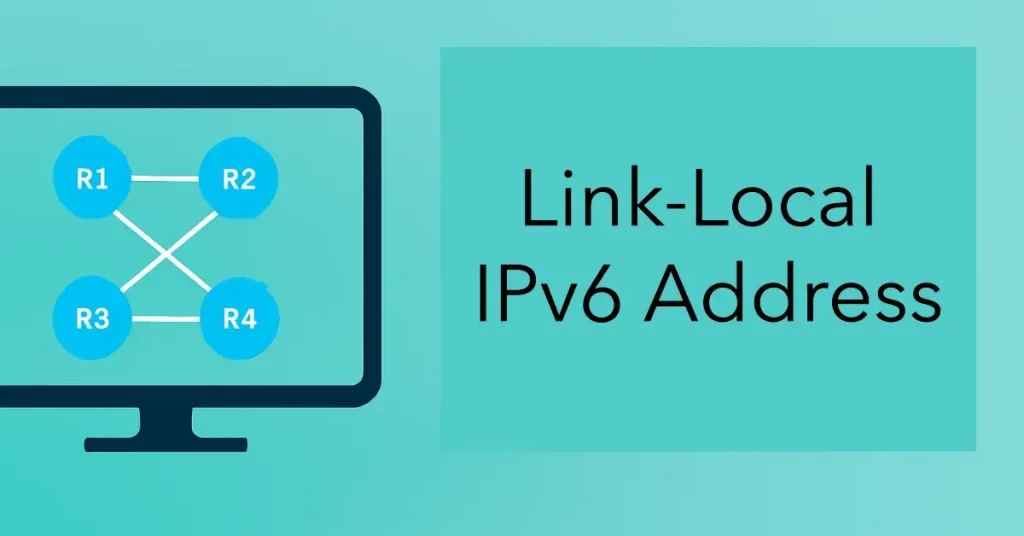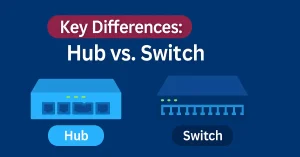Routers configured with dynamic routing protocols such as OSPF or EIGRP must send and receive routing protocol messages with their directly connected neighbors. The routers exchange messages between neighbors on the same subnet. These messages are always sent from the router’s source IPv4 address. Link-local IPv6 addresses are perfect for this purpose. The address also activates network devices to exchange data with other IPv6-enabled devices on the same link and only on that link.
Packets contain the source or destination link-local IPv6 address and are not routed beyond the link from where the packet originated. The router sends OSPFv3 messages using the source and destination link-local IPv6 addresses. The source link-local address is the address of the existing interface.
The destination IPv6 address can be a unicast address using the neighbor link local IPv6 address. It can also be sent using a multicast address. The FF02::5 address is the all-OSPF router multicast address, and the FF02::6 is the DR/BDR multicast address. The topology in Figure 1 will configure the link-local IPv6 address and OSPFv3 configuration in the coming article.

Assigning Link Local IPv6 Address
The router creates a link-local IPv6 address using the EUE-64 process or random interface IDs, which makes it challenging to recognize and remember. The IPv6 routing protocols use link-local IPv6 addresses for unicast and next-hop address information in the routing table, so making the address easily recognizable is essential.
So, configuring the link’s local address manually makes it recognizable and easier to remember. Furthermore, a router with several interfaces can assign the same link-local address to each IPv6-enabled interface because the link-local address is only needed for local communications.
We can configure the link-local address using the interface mode command <ipv6 address link-local address link-local>; the same command configures IPv6 global unicast addresses only appending the “link-local” keyword to the command. For example, “ipv6 address fe80::1 link-local”
The prefix range of the link-local address is from FE80 to FEBF. When an address begins with the hextet mentioned above, the link-local keyword must follow it. Figure 1 illustrates the link-local IPv6 address configuration on Router1.

Verifying Link-Local Address
Suppose we configure a global unicast address without configuring a link-local address. In that case, we can verify the link-local address using the same “show ipv6 interface brief” command for global IPv6 address verification. It automatically generates a link-local address. Figure 3 illustrates the verification of the IPv6 address.
Unless we configure the link-local address manually, Cisco routers create the link-local address using the FE80::/10 prefix and the EUI-64 process. We already discussed the EUI-64 in the previous lesson. It uses the 48-bit Ethernet MAC address, inserting FFFE in the middle and flipping the seventh bit. For serial interfaces, Cisco devices use the MAC address of an Ethernet interface.

FAQs
What is the purpose of link-local IPv6 addresses in OSPFv3?
Link-local addresses (FE80::/10) allow routers to exchange OSPFv3 messages with neighbors on the same link without routing beyond it. They serve as source/destination for unicasts and multicasts like FF02::5/6, enabling adjacency formation.
How do I manually configure a link-local IPv6 address on a Cisco router?
Use interface mode: ipv6 address FE80::1 link-local. This overrides auto-generated addresses, making them easier to remember for troubleshooting OSPFv3 next-hops.
What happens if I don’t configure a link-local address manually?
The router auto-generates one using EUI-64 (MAC address + FFFE, 7th bit flip) or random ID. It’s functional for OSPFv3 but harder to recognize in routing tables.
Can I use the same link-local address on multiple interfaces?
Yes, since they’re link-specific and not routed. This simplifies configs in large networks, but ensure no conflicts on shared links.
How do I verify link-local addresses in an OSPFv3 setup?
Use show ipv6 interface brief for addresses, show ipv6 ospf neighbor for neighbor link-locals. Check for adjacency issues if mismatched.
Why are link-local addresses preferred over globals in OSPFv3?
Globals can change, but link-locals are stable for local comms. They support no subnet matching, ideal for dynamic IPv6 environments.





